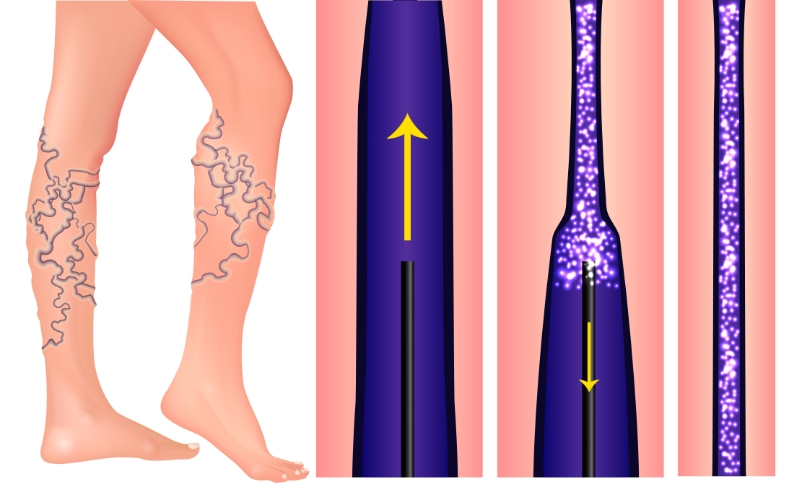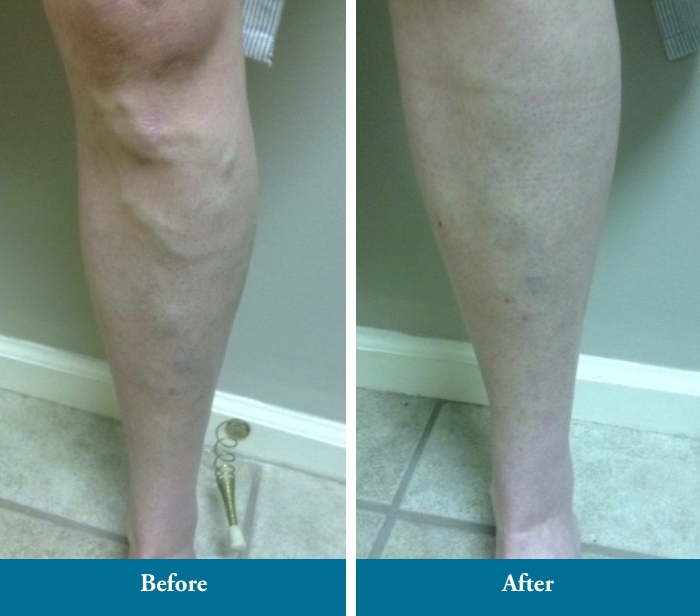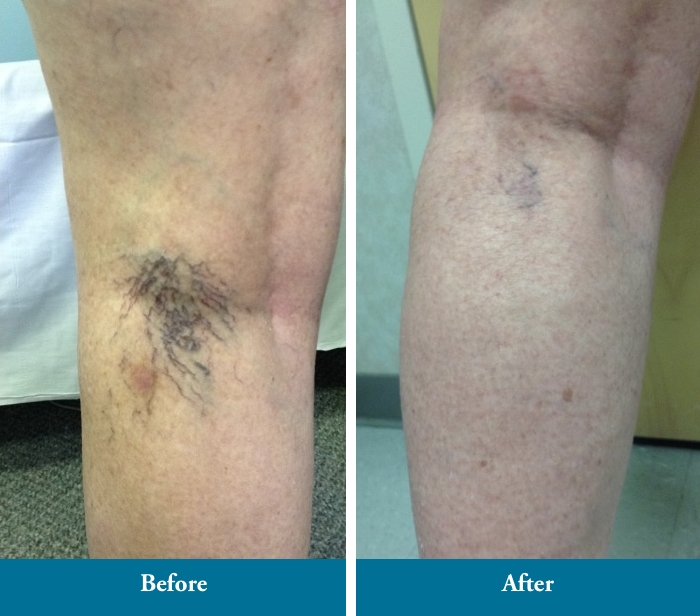ADVANCED TECHNOLOGY
The ClosureFast™ and Venaseal® procedures utilize the latest techniques to effectively treat patients suffering from chronic venous insufficiency (CVI).
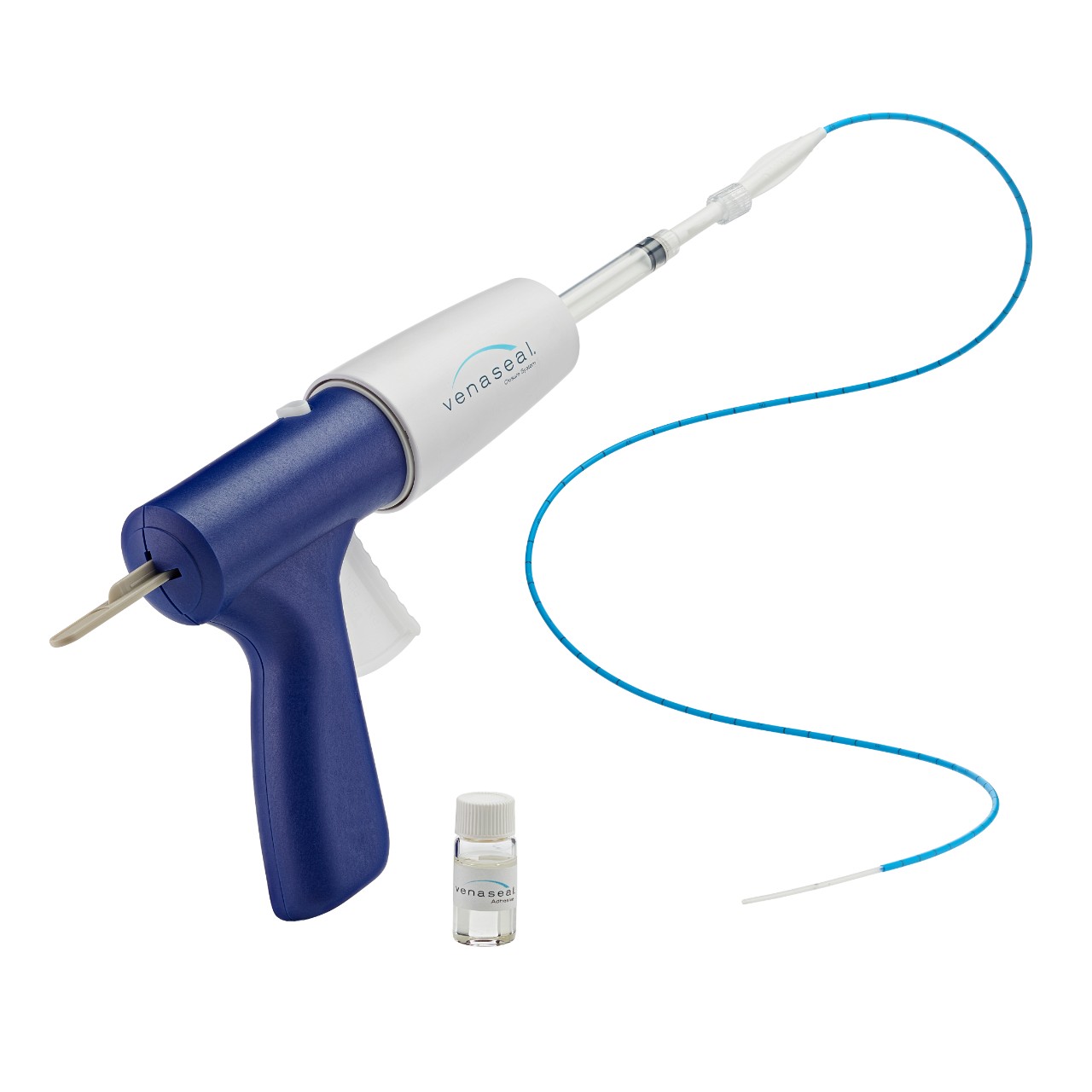
Venaseal®
The VenaSeal® Sapheon Closure System eliminates superficial varicose veins that cause these symptoms. To use the system, our trained vein care professional inserts a catheter directly into the diseased vein and injects the VenaSeal® adhesive, which is a clear gel that polymerizes into a solid substance. Ultrasound imaging is used to ensure proper placement of the catheter and gel. When the vein is sealed shut, blood is naturally rerouted by the body through healthier veins in the area. With this new system, there is no need for sclerosants, lasers, radio frequency waves, skin cutting or “vein stripping.” This allows patients to return to their usual activities quickly, with less bruising, and with a reduced risk of nerve injury as can sometimes occur with heat-based procedures. Some side effects may occur, such as tingling or vein inflammation (phlebitis), as occur with most vein treatment procedures. The FDA reviewed the safety and efficacy data on the VenaSeal® system and found it to be safe and effective for the treatment of superficial varicose veins of the legs.
Venaseal®
The VenaSeal® Sapheon Closure System eliminates superficial varicose veins that cause these symptoms. To use the system, our trained vein care professional inserts a catheter directly into the diseased vein and injects the VenaSeal® adhesive, which is a clear gel that polymerizes into a solid substance. Ultrasound imaging is used to ensure proper placement of the catheter and gel. When the vein is sealed shut, blood is naturally rerouted by the body through healthier veins in the area. With this new system, there is no need for sclerosants, lasers, radio frequency waves, skin cutting or “vein stripping.” This allows patients to return to their usual activities quickly, with less bruising, and with a reduced risk of nerve injury as can sometimes occur with heat-based procedures. Some side effects may occur, such as tingling or vein inflammation (phlebitis), as occur with most vein treatment procedures. The FDA reviewed the safety and efficacy data on the VenaSeal® system and found it to be safe and effective for the treatment of superficial varicose veins of the legs.
Venaseal Closure System
Venaseal Testimonial
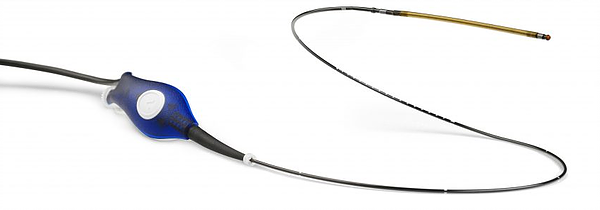
ClosureFast™ Procedure
The ClosureFast™ procedure uses radiofrequency energy to precisely and effectively treat patients suffering from chronic venous insufficiency (CVI). The vein is accessed percutaneously through a small incision in the ankle. A catheter is introduced into the vein through this small incision. The catheter delivers radiofrequency energy to the vein wall, causing it to heat, collapse and seal shut. Once the diseased vein is closed, other healthy veins take over and empty blood from your legs. As normal return flow is reestablished, your symptoms should improve considerably.
Ambulatory Phlebectomy
Ambulatory phlebectomy is a procedure done in the office to remove small varicose veins. This procedure is typically only necessary if the veins are not amenable to either endovenous ablation or sclerotherapy. The varicose vein may be in a location that is not treatable by endovenous ablation, and sometimes the vein is too large to be treated with just sclerotherapy.
This procedure is performed in the office, using local anesthesia. Small incisions are made in the area of the vein, and then a special hook tool is used to remove the vein. The incision is closed and bandages are applied.

Sclerotherapy
Sclerotherapy is a popular method of eliminating varicose veins and spider veins in which a solution, called a sclerosing agent, is injected into the veins. The sclerosing agent irritates the inside of the vein, causing the blood to clot and the vein to scar. The body is then able to find alternate pathways for your blood to return to your heart. The scarred vein is absorbed by the body, eliminating the painful or unsightly superficial veins.
The number of treatments needed to clear or improve the condition differs from patient to patient, and depends on the extent of varicose and spider veins present. One to six treatments may be needed, with an average of three to four treatments.
